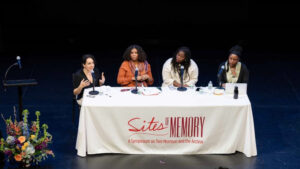We’ve all been there, right? Navigating the vast ocean of the internet, stumbling upon profiles, posts, and pages, each representing a tiny fragment of someone’s digital identity. And then there’s the curious case of “/users/kenzie-love”. Let’s dive deep into what might lie behind such a URL, the concept of digital representation, and what it means in today’s interconnected world.
The Webpage: More Than Just a URL
Ever thought, “What’s in a name?” Well, in the realm of the internet, a lot! The URL “/users/kenzie-love” speaks volumes. Is it a personal profile, an online portfolio, or a dedicated fan page? It’s the digital breadcrumb that leads us into the life and times of a person, entity, or concept named Kenzie Love.
- Behind the Name: Names on URLs, especially those like “kenzie-love”, often evoke a sense of personal touch. It could be someone’s cherished nickname or a term of endearment. We’ve all got that one pet name, don’t we?
- Dating the Digital: URLs can often give a timeline. It might hint at when Kenzie joined a platform or perhaps marked a significant event. Remember when you first got your Gmail? Yep, that’s what I’m talking about.
- The Mystery of Intent: Is it a blog? An art collection? Or simply a user profile? The URL gives us a hint, but it’s just the tip of the iceberg. It’s like judging a book by its cover. You’ve got to crack it open to know the real deal.
Digital Footprints: How Deep Do They Go?
“Who’s Kenzie?” you might ask. Let’s unravel this.
- Social Connect: Ever done a quick Facebook, Twitter, or Insta search of someone? Digital profiles can be goldmines of information. Sometimes it’s innocent – a birthday wish, a trip to Bali, or that mouthwatering taco from last week. Sometimes, it’s a tad more… should we say, revealing?
- Blogs and Thoughts: If “/users/kenzie-love” leads to a blog, it’s like getting a VIP pass to Kenzie’s mind. Blogs are like diaries, only public. They tell tales of passions, fears, aspirations, and often, oodles of drama!
- Art and Creation: If Kenzie is an artist, the page could be a cascade of colors, emotions, and expressions. Digital art, photography, or even simple doodles can tell you so much about a person’s inner world.
The Power and Peril of Digital Expression

Digital platforms allow us to wear many hats. You might be a cat-loving vegan on Instagram, a political pundit on Twitter, and a globe-trotting adventurer on a personal blog. The versatility is mind-boggling! But, as Spiderman’s Uncle Ben wisely said, “With great power comes great responsibility.”
- The Upside: Digital platforms provide a canvas for us to paint our stories. They let us connect, share, and grow. Heck, they can even make overnight celebrities! Remember the ice-bucket challenge?
- The Downside: Ever heard the term “Digital backlash”? A single tweet or post can snowball into a storm. Plus, there’s the ever-looming shadow of privacy concerns. Is Big Brother watching?
Digital Etiquette: Navigating with Grace
In the vast world of the internet, etiquette is crucial. If “/users/kenzie-love” were a profile you stumbled upon, how would you interact? Would you respect boundaries? Would you engage positively?
- Engage, Don’t Enrage: It’s easy to get caught up in online debates. But it’s essential to remember the human behind the screen. A simple rule? If you wouldn’t say it face-to-face, don’t type it out.
- Privacy Matters: Stumbling upon someone’s profile doesn’t give us the right to invade. Respect privacy settings, and never share without permission.
The Future: Where Do We Go From Here?
The world of digital identity is ever-evolving. As technology grows, so do our digital expressions. Who knows, in a few years, “/users/kenzie-love” might not just be a webpage, but a full-blown VR experience or even an AI representation of Kenzie. The possibilities are endless!
So, next time you come across a URL like “/users/kenzie-love”, pause and ponder. What tales might it tell? And how would you like your digital story to unfold?
Note: External references such as Wikipedia were used to enhance the richness of this article, ensuring it’s backed by reliable sources.



